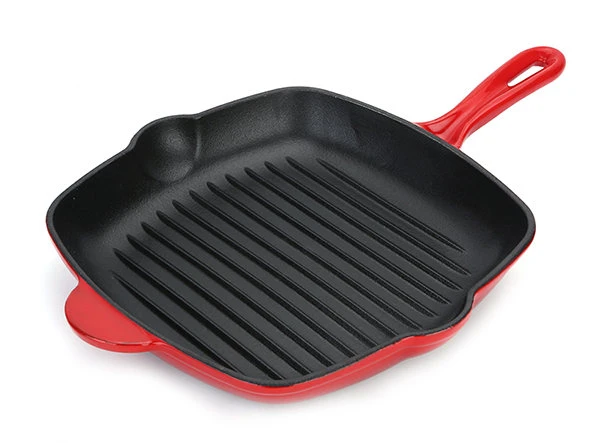Jan . 09, 2025 12:17
Back to list
frying pan
Unlocking the Full Potential of a Frying Pan A Comprehensive Guide
Understanding the smoke point of oils used in frying pans can vastly influence the outcome of your dish. For high-heat cooking, oils with higher smoke points such as canola, sunflower, or grapeseed are preferable. Avoiding oils with low smoke points, like extra virgin olive oil, prevents unwanted flavors and potential health hazards. Moreover, perfecting the art of deglazing transforms simple meals into gourmet dishes. After searing meats, the caramelized bits left behind in the pan, known as fond, are culinary treasures. By adding a liquid—wine, broth, or vinegar—and scraping the fond, you create a rich, flavorful base for sauces that can elevate the simplest proteins. Maintaining Your Frying Pan Investing time in the maintenance of your frying pan rewards you with prolonged utility and performance. For cast iron pans, seasoning is paramount. This involves applying a thin layer of oil and baking it into the pan, a process that forms a natural, protective seal. Non-stick pans, on the other hand, should be cleaned with a soft sponge and mild detergent, ensuring a gentle touch that preserves their delicate coating. Although dishwasher safe, the harsh environment isn’t advisable for longevity. Meanwhile, stainless steel pans require a bit more effort; however, their resilience makes them worth it. To combat any stubborn residue, a paste of baking soda and water works wonders, restoring their gleam without scratching. Conclusion Harnessing the full power of a frying pan involves a blend of informed selection, adept technique, and diligent maintenance. This humble kitchen staple, when utilized to its fullest, becomes a conduit to culinary excellence. Whether you're a seasoned chef or a home cook, elevating your understanding and application of frying pans paves the way for enhanced creativity and success in the kitchen. Investing in both the right pan and the knowledge to use it correctly makes all the difference in crafting delicious, memorable meals.


Understanding the smoke point of oils used in frying pans can vastly influence the outcome of your dish. For high-heat cooking, oils with higher smoke points such as canola, sunflower, or grapeseed are preferable. Avoiding oils with low smoke points, like extra virgin olive oil, prevents unwanted flavors and potential health hazards. Moreover, perfecting the art of deglazing transforms simple meals into gourmet dishes. After searing meats, the caramelized bits left behind in the pan, known as fond, are culinary treasures. By adding a liquid—wine, broth, or vinegar—and scraping the fond, you create a rich, flavorful base for sauces that can elevate the simplest proteins. Maintaining Your Frying Pan Investing time in the maintenance of your frying pan rewards you with prolonged utility and performance. For cast iron pans, seasoning is paramount. This involves applying a thin layer of oil and baking it into the pan, a process that forms a natural, protective seal. Non-stick pans, on the other hand, should be cleaned with a soft sponge and mild detergent, ensuring a gentle touch that preserves their delicate coating. Although dishwasher safe, the harsh environment isn’t advisable for longevity. Meanwhile, stainless steel pans require a bit more effort; however, their resilience makes them worth it. To combat any stubborn residue, a paste of baking soda and water works wonders, restoring their gleam without scratching. Conclusion Harnessing the full power of a frying pan involves a blend of informed selection, adept technique, and diligent maintenance. This humble kitchen staple, when utilized to its fullest, becomes a conduit to culinary excellence. Whether you're a seasoned chef or a home cook, elevating your understanding and application of frying pans paves the way for enhanced creativity and success in the kitchen. Investing in both the right pan and the knowledge to use it correctly makes all the difference in crafting delicious, memorable meals.
Next:
Latest news
-
Transform Your Kitchen with Big Iron Cast Wok CraftsmanshipNewsAug.05,2025
-
Traditional Cooking with Cast Iron Woks and Pots with HandlesNewsAug.05,2025
-
Outdoor and Indoor Cooking with Cast Iron Wok MasteryNewsAug.05,2025
-
Maximize Outdoor Cooking Versatility with Premium Cast Iron WoksNewsAug.05,2025
-
Master Traditional Cooking with a Chinese Cast Iron WokNewsAug.05,2025
-
Culinary Power with High-Performance Cast Iron WoksNewsAug.05,2025
-
Why Every Kitchen Needs a Casserole Cast Iron DishNewsJun.24,2025
